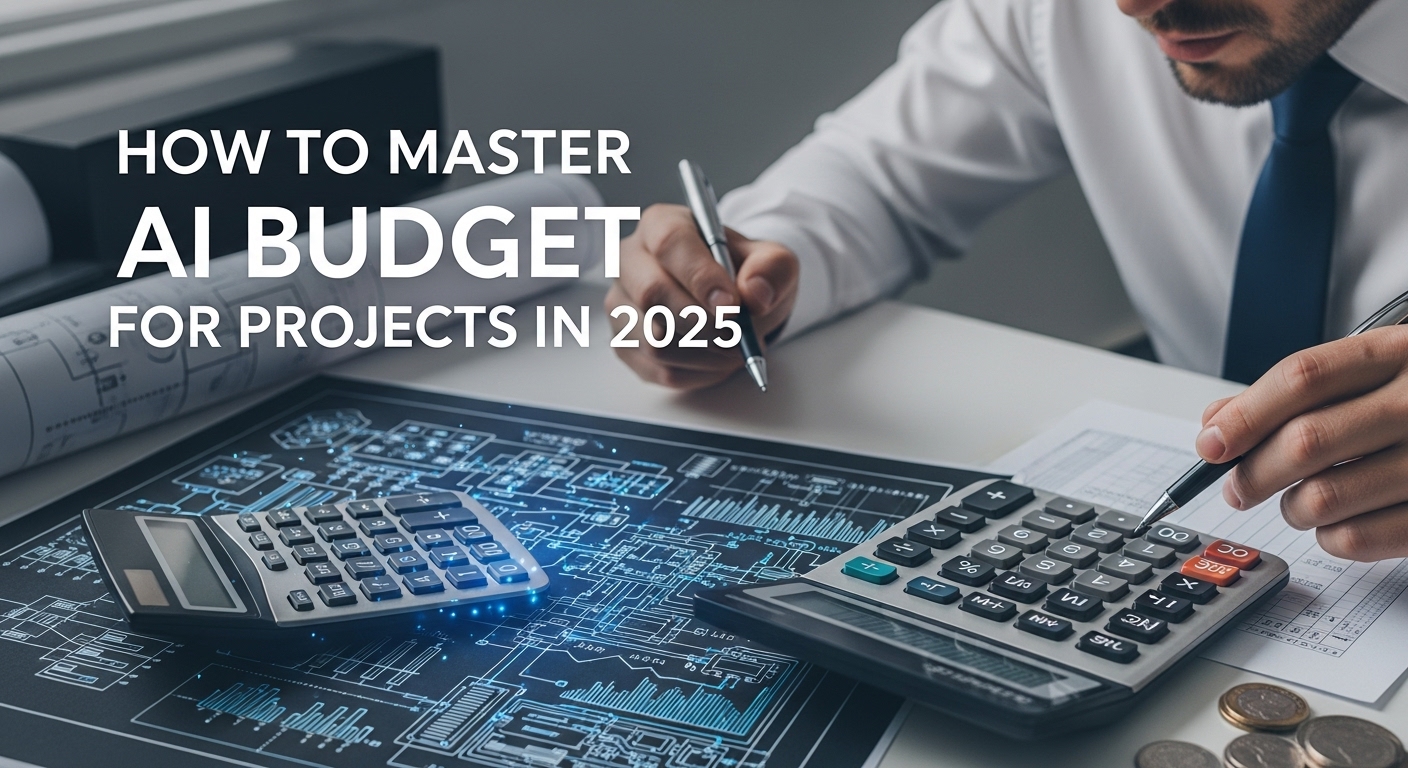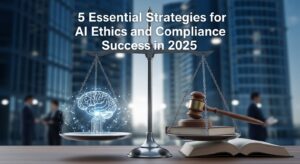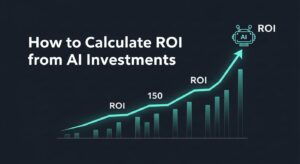Are you ready to transform your organization with artificial intelligence, but struggling to understand the true costs involved? AI implementation budget planning has become one of the most critical success factors for businesses embarking on their digital transformation journey. Without proper financial planning, even the most promising AI initiatives can quickly spiral out of control or fail to deliver expected returns.
The reality is stark: according to recent industry studies, over 70% of AI projects exceed their initial budgets, and nearly 50% fail to move beyond the pilot phase due to inadequate financial planning. This comprehensive guide will equip you with the essential knowledge to create realistic, effective budgets for your AI implementation projects.
Understanding the True Scope of AI Implementation Costs
Before diving into specific budgeting strategies, let’s examine what factors actually drive AI implementation budget requirements. Many organizations make the critical mistake of focusing solely on software licensing costs while overlooking the broader ecosystem of expenses.
Infrastructure and Technology Costs
The foundation of any AI project requires robust technological infrastructure. Cloud computing resources often represent 25-40% of total project costs, particularly for machine learning workloads that demand significant computational power. Consider these key infrastructure elements:
Hardware Requirements:
- High-performance computing resources for model training
- GPU clusters for deep learning applications
- Storage systems for large datasets
- Network infrastructure upgrades
Software and Licensing:
- AI platform subscriptions and licenses
- Development tools and frameworks
- Data management and analytics software
- Security and compliance tools
Human Resources: The Hidden Budget Driver
What many executives don’t anticipate is that personnel costs typically account for 60-70% of the total AI implementation budget. The competition for skilled AI professionals has driven salaries to premium levels, making talent acquisition and retention a significant financial consideration.
Essential Team Roles:
- AI/ML Engineers ($120,000-$200,000 annually)
- Data Scientists ($110,000-$180,000 annually)
- Data Engineers ($100,000-$160,000 annually)
- Project Managers with AI experience ($95,000-$150,000 annually)
- Change Management Specialists ($80,000-$130,000 annually)
The 7-Step Framework for AI Implementation Budget Planning
Step 1: Define Your AI Project Scope and Objectives
How clearly can you articulate what success looks like for your AI initiative? This fundamental question drives every subsequent budgeting decision. Start by establishing specific, measurable objectives that align with your business strategy.
Consider these critical scope-defining questions:
- Which business processes will AI enhance or automate?
- What data sources will the system need to access?
- How many users will interact with the AI solution?
- What integration points exist with current systems?
Step 2: Conduct a Comprehensive Cost Assessment
Building an accurate AI implementation budget requires examining both obvious and hidden cost categories. Use this framework to ensure comprehensive coverage:
Cost Category | Budget Allocation | Key Considerations |
Personnel | 60-70% | Include contractors, training, and retention costs |
Technology Infrastructure | 15-25% | Cloud services, hardware, software licenses |
Data Preparation | 10-15% | Cleaning, labeling, integration, quality assurance |
Compliance & Security | 5-10% | Audits, certifications, privacy protection |
Training & Change Management | 3-8% | User training, process redesign, organizational adaptation |
Step 3: Plan for the Three Phases of AI Implementation
Successful AI implementation budget planning recognizes that AI projects unfold across distinct phases, each with unique cost characteristics:
- Discovery Phase (3-6 months): This initial phase typically consumes 20-30% of the total budget. Focus on proof-of-concept development, data assessment, and feasibility studies. Budget for extensive stakeholder engagement and preliminary technical exploration.
- Development Phase (6-18 months): The most resource-intensive phase, consuming 50-60% of your budget. This includes model development, system integration, testing, and initial deployment preparation.
- Deployment and Optimization Phase (6-12 months): Reserve 20-30% of your budget for full-scale deployment, user training, performance monitoring, and continuous optimization activities.
Step 4: Account for Data-Related Expenses
Data costs represent one of the most underestimated aspects of AI implementation budget planning. High-quality data is the foundation of successful AI systems, yet organizations frequently underestimate the time and resources required for data preparation.
Common Data-Related Costs:
- Data acquisition and licensing fees
- Data cleaning and preprocessing services
- Annotation and labeling for supervised learning
- Data storage and management infrastructure
- Privacy and compliance validation processes
Industry experts suggest allocating 30-40% of your development phase budget specifically to data-related activities.
Step 5: Build in Risk Mitigation and Contingency Planning
What happens when your AI project encounters unexpected technical challenges or market changes? Smart AI implementation budget planning includes robust contingency provisions.
Recommended Contingency Allocations:
- Technical risk buffer: 15-20% of total budget
- Scope expansion reserve: 10-15% of total budget
- Market change adaptation fund: 5-10% of total budget
Step 6: Plan for Ongoing Operational Costs
Many organizations focus intensively on initial implementation costs while neglecting long-term operational expenses. Your AI implementation budget should explicitly address ongoing costs that continue well beyond the initial deployment.
Annual Operational Cost Categories:
- System maintenance and updates (10-15% of initial investment)
- Model retraining and optimization (8-12% of initial investment)
- Infrastructure scaling and upgrades (5-10% of initial investment)
- Personnel retention and skills development (variable, often 5-20%)
Step 7: Establish Success Metrics and ROI Tracking
How will you demonstrate that your AI implementation budget investment delivered meaningful business value? Establish clear metrics before implementation begins, and budget for the measurement infrastructure required to track progress.
Common Budget Pitfalls and How to Avoid Them
- Underestimating Integration Complexity: Integration with existing systems often proves more complex and expensive than anticipated. Budget 25-40% more time and resources for integration activities than initial estimates suggest.
- Neglecting Change Management: Technical implementation represents only half the challenge. Successful AI adoption requires significant organizational change management, which should consume 10-15% of your total AI implementation budget.
- Overlooking Regulatory and Compliance Costs: AI systems increasingly face regulatory scrutiny. Budget for legal review, compliance audits, and potential system modifications to meet evolving regulatory requirements.
Funding Strategies for AI Implementation Projects
Internal Funding Approaches
- Phased Investment Model: Structure funding across project phases to demonstrate value incrementally and reduce financial risk.
- Shared Services Model: Distribute costs across multiple business units that will benefit from the AI implementation.
- Innovation Fund Allocation: Leverage existing innovation or digital transformation budgets specifically earmarked for emerging technologies.
External Funding Options
Consider exploring external funding sources, particularly for innovative or research-oriented AI projects:
- Government grants and tax incentives for AI research
- Strategic partnerships with technology vendors
- Academic collaborations and research funding
- Industry consortium participation
For more information on government AI funding opportunities, visit the National Science Foundation’s AI research programs.
Industry-Specific Budget Considerations
- Healthcare AI Implementation: Healthcare AI projects typically require 20-30% higher budgets due to regulatory compliance requirements, data privacy considerations, and the need for extensive validation and testing.
- Financial Services AI Implementation: Financial institutions should budget additional resources for risk management, regulatory compliance, and security infrastructure when planning their AI implementation budget.
- Manufacturing AI Implementation: Manufacturing AI projects often require significant integration with existing operational technology (OT) systems, potentially adding 15-25% to standard implementation budgets.
Advanced Budget Optimization Strategies
- Leveraging Cloud-Based AI Services: Cloud platforms like Amazon Web Services AI services, Microsoft Azure AI, and Google Cloud AI can significantly reduce initial infrastructure investments while providing scalability.
- Building vs. Buying: Cost-Benefit Analysis: Conduct thorough analysis comparing custom development costs against commercial AI solutions. Often, hybrid approaches combining commercial platforms with custom development provide optimal cost-effectiveness.
- Phased Implementation Approach: Structure your AI implementation budget across multiple phases, allowing for learning and adaptation while managing financial risk.
Measuring Success and ROI
Key Performance Indicators for AI Projects
Track both technical and business metrics:
Technical Metrics:
- Model accuracy and performance
- System uptime and reliability
- Data processing speed and efficiency
Business Metrics:
- Cost savings achieved
- Revenue enhancement
- Process efficiency improvements
- Customer satisfaction improvements
ROI Calculation Framework
Calculate AI project ROI using this formula: ROI = (Benefits Gained – Implementation Costs) / Implementation Costs × 100
Include both quantifiable benefits (cost savings, revenue increases) and qualitative benefits (improved decision-making, competitive advantage).
Future-Proofing Your AI Investment
- Scalability Considerations: Design your AI implementation budget to accommodate future growth and expansion. Consider modular architectures that allow incremental enhancement without complete system overhauls.
- Technology Evolution Planning: Allocate 10-15% of your annual operational budget to technology updates and evolution to ensure your AI systems remain current and effective.
- Skills Development Investment: Budget for continuous learning and skills development to maintain internal AI capabilities as the technology landscape evolves.
Conclusion: Building a Sustainable AI Future
Creating an effective AI implementation budget requires careful consideration of both immediate implementation needs and long-term operational requirements. By following the comprehensive framework outlined in this guide, organizations can avoid common pitfalls while maximizing the value of their AI investments.
Remember that AI implementation is not a one-time project but an ongoing journey of organizational transformation. Success requires not just adequate funding, but strategic thinking, careful planning, and commitment to continuous learning and adaptation.
The organizations that thrive in the AI-powered future will be those that approach AI implementation budget planning with both ambition and realism, balancing innovation with practical financial management.
Ready to begin your AI implementation journey? Start by conducting a thorough assessment of your organization’s current capabilities and specific AI objectives. With proper budget planning and strategic execution, your AI investment can deliver transformational value for years to come.











